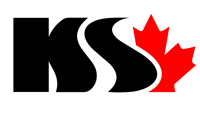Kiteboarding
Wing Foiling
Wake Foiling
Water Wear
Lessons
FOILS
Load Frame & Canopy
There is a lot of discussion around canopy fabrics, and we will always set out to use the best on the market, as it is such a critical component. We use Teijin Canopy cloth manufactured in Japan, as we believe they are the best manufacturer and they work consistently with Airush and a few others to constantly improve the fabric.
We currently use two different weights of fabric, with either a double Ripstop (D2) or a Quad Ripstop (D4) but don’t believe much in the amount of Ripstop in the fabric that’s a bit of a marketing thing. The D2 is around 20% lighter (51gm/m2) than the D4 (62gm/m2) and that just means there is more yarn per Square meter to keep your kite in one piece. The downside of heavier cloth is kites do not fly as well, but in an application such as a school or for an entry-level rider adding 120 grams or so to a Kite, is very relevant.
Looking at the load frame, what we do believe in is good old structural support. Canopy cloth is not good under shock loading (traditionally kites might split when you crash them) and not as good under bias tension (Loads at 45 degrees). It is also not good under extended tension; it has limited memory so you want to avoid overloading it.
Understanding that the canopy and its seams are the most fragile part of the kite, we developed the load frame to fundamentally change this by removing as much of the structural load off of the canopy cloth and transferring this into the kite.

Airush Load Frame featuring WebTech
The Airush Load Frame featuring WebTech has been the key to setting the ultimate benchmark in durability, without compromising on weight.
By expanding our exclusive Load Frame with WebTech throughout the areas normally occupied by Dacron, we are able to minimize or completely remove the heavier fabric and utilize the Ballistic high-modulus polyethylene web fibers instead – increasing strength and minimizing weight.
Integrated High Modulus Polyethylene Fibers
Central to the concept of the Load Frame are the lightweight Ultra High Modulus yarns, of which each single yarn can carry 40kg. Think of them as a lightweight web with engineered energy absorption under load, similar to a spider web.
These yarns are integrated into the canopy through reinforced taping that allows them to elongate when under extreme load, absorbing most of the shock that traditionally would have run through the canopy. At the same time, they carry the primary load of the canopy, preventing stretch and increasing long-term performance.
WebTech
WebTech minimizes or replaces the traditional Dacron reinforcing by channeling the broader loads into the Load Frame through a web “sub frame” of ultra-high-molecular polyethylene (Ultra High Modulus). This is featured in key areas such as the primary attachment points on the leading edge or the rear attachment points, while also being used to support structural components such as the center strut.
Progressive Bridle Configuration
V3 / Fixed / 5th line
Yes, we love progressive things, outlines, rockers, depowers etc. The key concept behind progressive bridle configurations is to offer you (the rider) varying level of depower based on your key requirements.
In its fundamental form, bridles with more pulleys offer more total depower and better steering once the kite is depowered. The flipside to this is kites with a more direct connection to the kite, will feel more direct and responsive they feel. This is broadly based on what you are used to; as of course, we chase responsiveness in each configuration.

No products found in this collection
Subscribe
Sign up to get the latest on sales, new releases and more …
